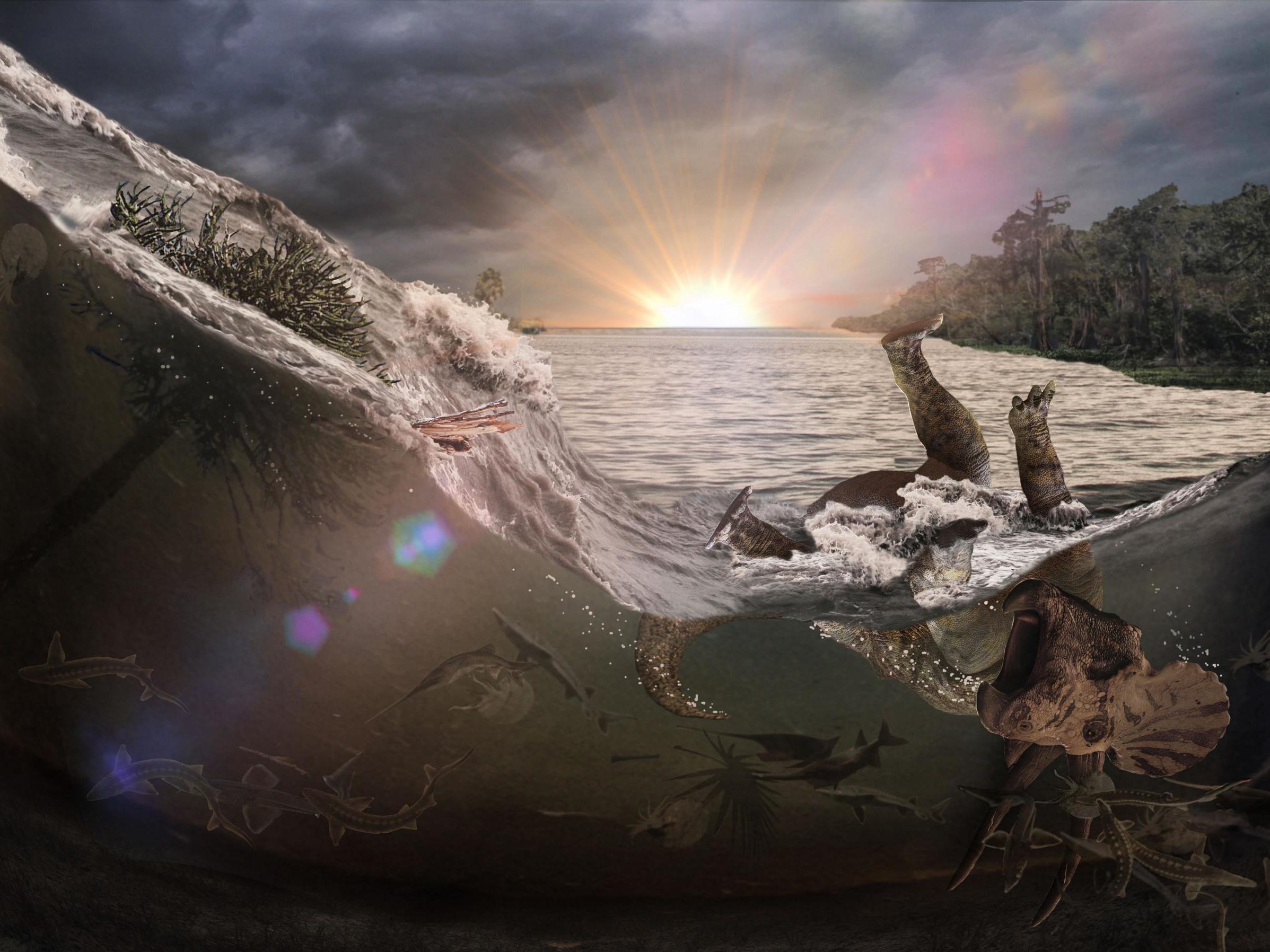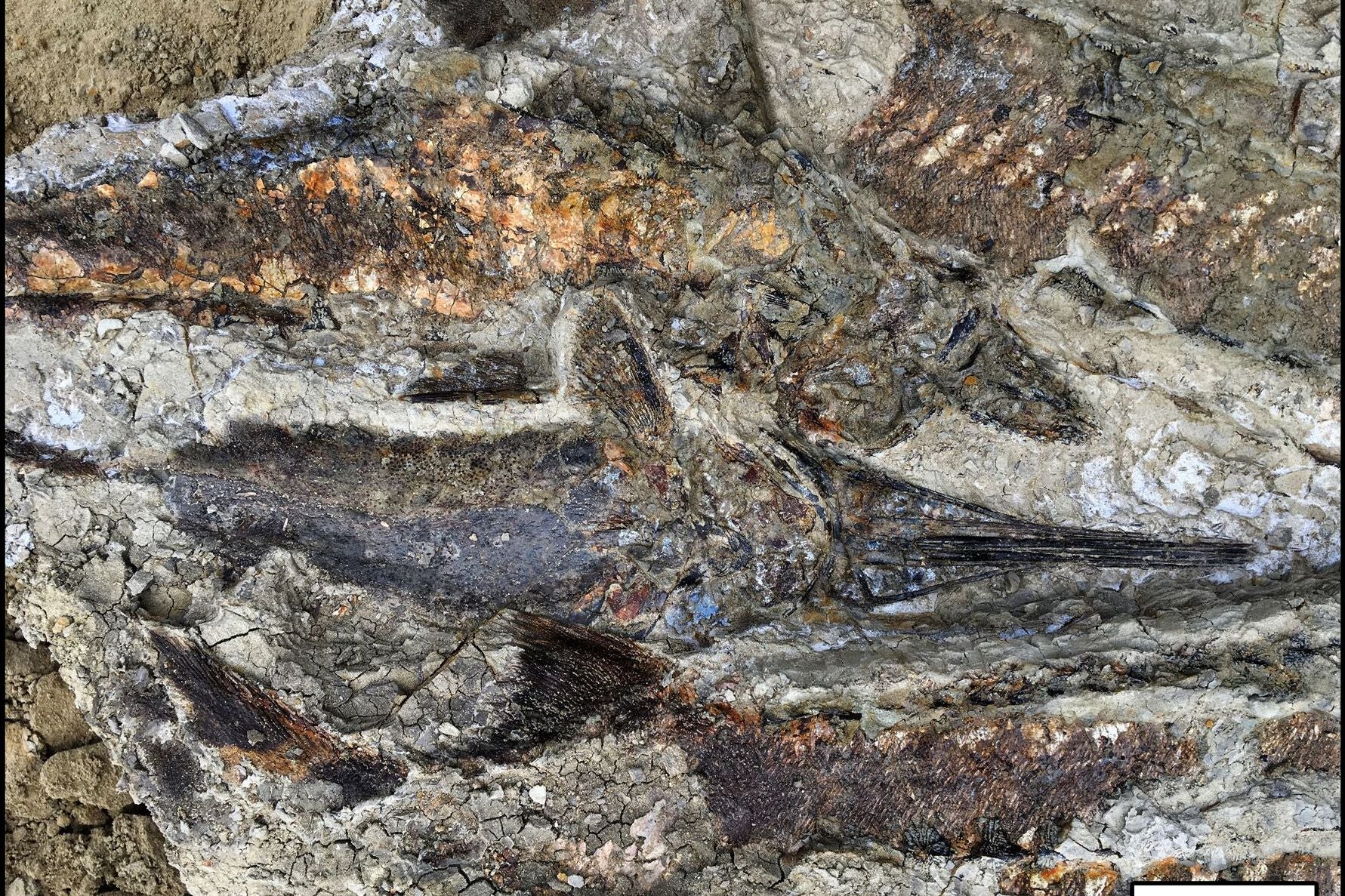The Independent's journalism is supported by our readers. When you purchase through links on our site, we may earn commission.
Prehistoric ‘graveyard’ left by dinosaur-killing asteroid unearthed by scientists
'We've understood that bad things happened right after the impact, but nobody's found this kind of smoking-gun evidence'

A fossil site has captured the moments just after the asteroid thought to have wiped out the dinosaurs collided with Earth, palaeontologists have claimed.
The remains of fish and trees unearthed at a “graveyard” site called Tanis in North Dakota provide evidence for a series of deadly events that played out in the immediate aftermath of the impact.
Within minutes, the scientists think earthquakes and sea surges swept sea creatures inland, burying and preserving their bodies in sediment.
At the same time, glass beads formed from molten rock spraying into the sky would have pelted down onto the fish, choking them as their gills became clogged.
These results are set to be published in the journal Proceedings of the National Academy of Sciences, in a paper the authors say offers a unique insight into Earth’s most recent mass extinction.
“A tangled mass of freshwater fish, terrestrial vertebrates, trees, branches, logs, marine ammonites and other marine creatures was all packed into this layer by the inland-directed surge,” said Robert DePalma, a doctoral student at the University of Kansas who led the expedition.
The Chicxulub impact, caused by a 12km object smashing into the Gulf of Mexico, is widely regarded as the event that triggered the extinction of dinosaurs and around 75 per cent of animals and plants.
Researchers were able to date the Tanis site’s fish skeletons and amber from tree sap to the point around 66 million years ago when the space rock struck.

Among the researchers working on the new paper was Dr Walter Alvarez who, with his father Luis, was instrumental in developing the theory that an asteroid wiped out the dinosaurs.
They proposed a layer of iridium – an element commonly found on space rocks – found in the planet’s geological record was a sign of an enormous collision at the end of the Cretaceous period.
In their new study, the scientists found a later of iridium on top of the deposit, which helped them date the fossils.
A report in The New Yorker claims that besides fish it also contains evidence of dinosaurs, mammals and sea reptiles killed in the aftermath of the asteroid’s impact.
Among these proposed remnants were remains of a horned Triceratops and a duck-billed hadrosaur.
However, experts are still sceptical about some of these claims, which they point out have yet to be published in the scientific literature.
“This is hugely exciting if true, but it will take extraordinary evidence to convince palaeontologists,” Dr Steve Brusatte, a palaeontologist at the University of Edinburgh, told The Independent.
“I think the evidence is strong for a catastrophic event that killed many fish close to the asteroid impact. But the research paper does not discuss any dinosaur graveyard.
“That has only been mentioned in the New Yorker article. So I am at a loss because there is no evidence for me to assess when it comes to the dinosaur part of the story.”
Nevertheless, the scientists behind the work said it provides the first snapshot of the immediate events following the Chicxulub impact, and hope to continue exploring this critical event in Earth’s history.
“We’ve understood that bad things happened right after the impact, but nobody’s found this kind of smoking-gun evidence,” said co-author Professor David Burnham, also at the University of Kansas.
“People have said, ‘We get that this blast killed the dinosaurs, but why don’t we have dead bodies everywhere?’ Well, now we have bodies.”

Join our commenting forum
Join thought-provoking conversations, follow other Independent readers and see their replies
Comments
Bookmark popover
Removed from bookmarks